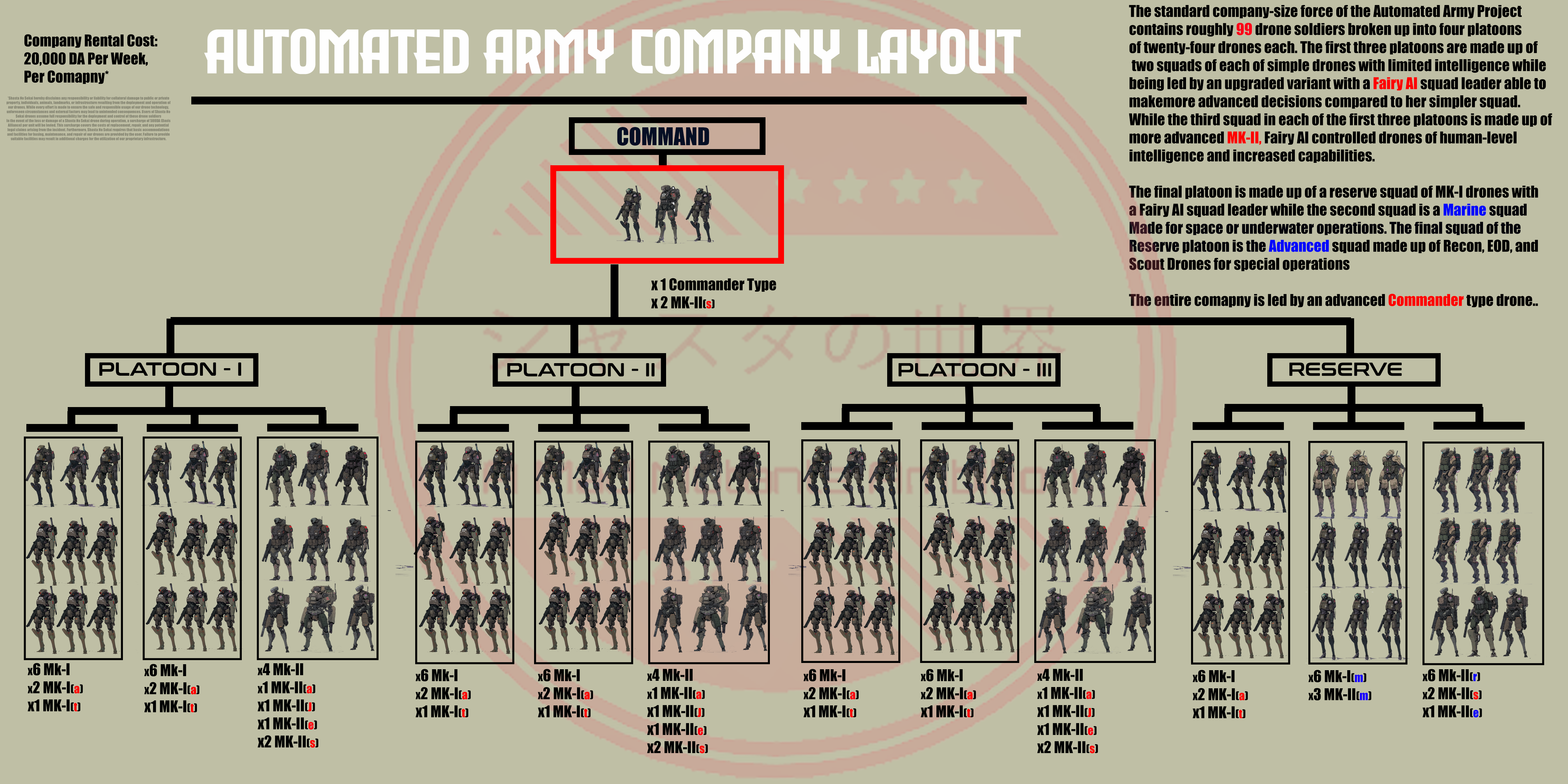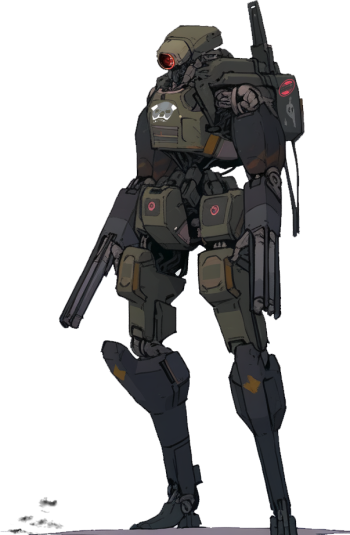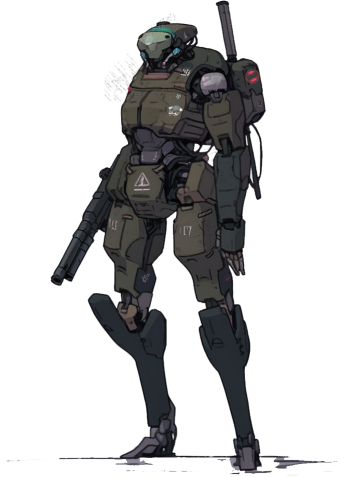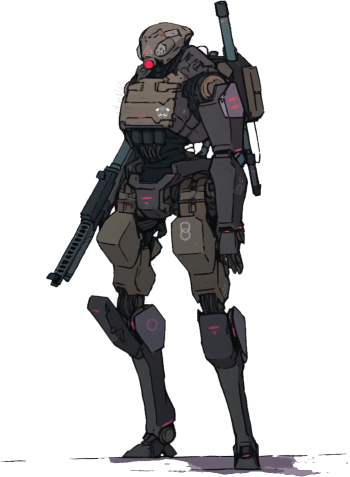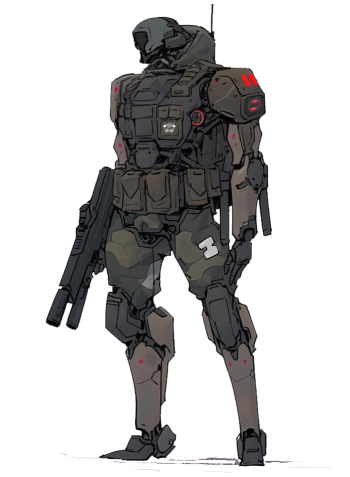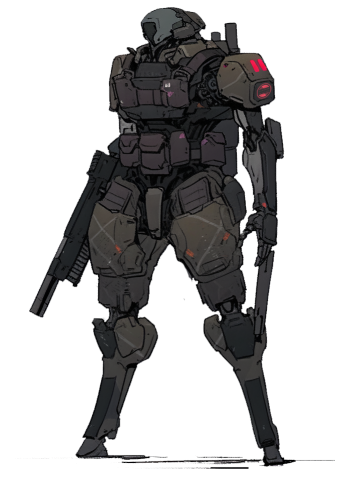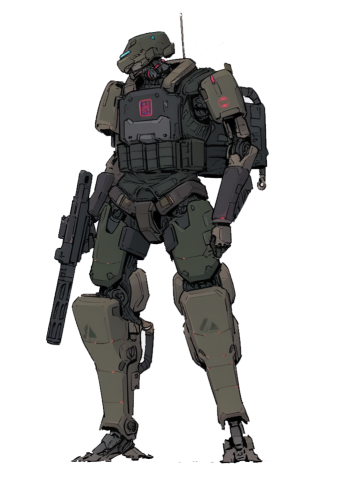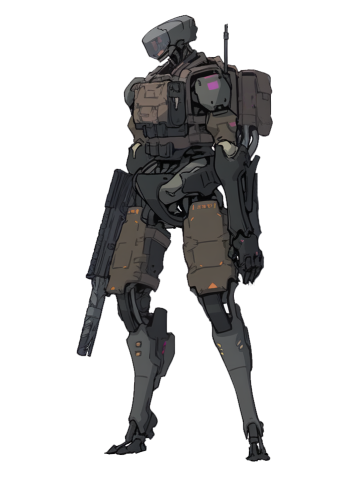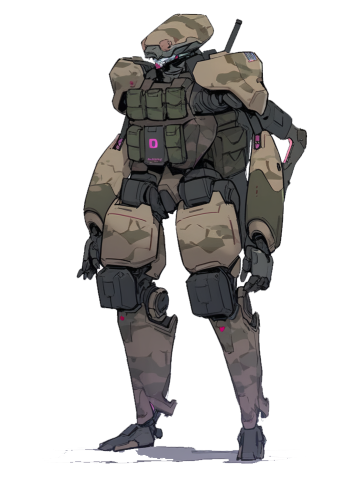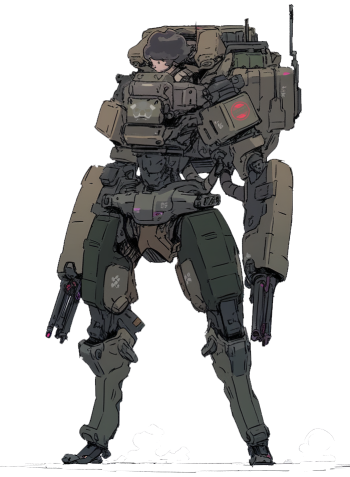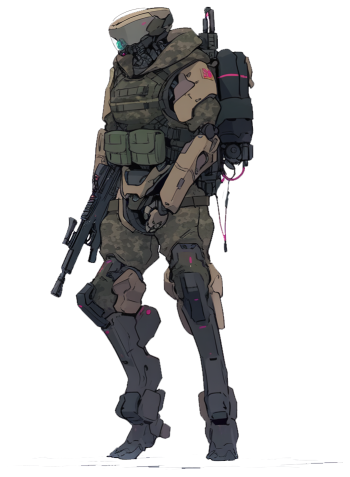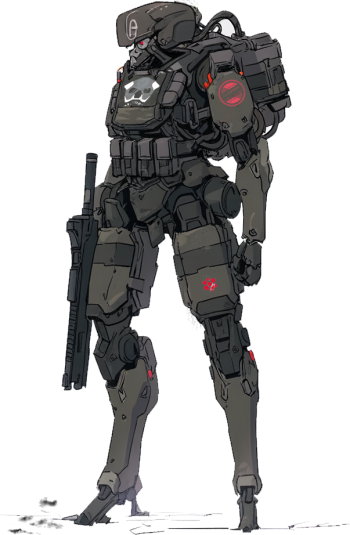Table of Contents
Automated Army Project
The Automated Army Project by Shasta No Sekai aims at creating an army of automated drone soldiers. The project is based on the idea of connecting Fairys to drone shells through the Fae, allowing them to inhabit and control the drones.
About the Project
Lacking in trained or experienced military personnel, The Automated Army Project was conceived as a way to revolutionize the field of military combat. By creating an army of automated drones, Shasta No Sekai Corporation aims to reduce the risk to its already danger-prone security forces' lives in dangerous missions, increase efficiency and accuracy in combat, and gain a decisive advantage on the battlefield, leading to a significant investment in further development and deployment of the technology. Shastas World Corporation is currently working on creating a fully automated army of drone soldiers, which could revolutionize the field of military combat.
Maybe… The future development of the project is focused on improving the combat capabilities of drones, increasing their range and endurance, and enhancing their ability to operate in extreme environments.
Contracting
Despite having the manufacturing ability to field considerably more the Automated Army Project currently only offers seven companies strength of roughly over one hundred drones each. This is limited by the corporation only having seven tactics and military-coded Fairy Ai known as the Pledias and inhabit commander-type bodies. The most notable of the Pledias is Alpha-Beta of the Strays who is the overall military commander of the corporation.
While it is not impossible for the corporation to train or field more commander type fairys it is also not in the corporations' current interests to be known or act as a solely military force when, in fact, the Automated Army Project was devised as a side project for Fairy capabilities and then security forces that turned into a side means of producing funding for the corporation.
AAP platoons are created on-site by the Avatar Of Clang and are delivered planetside or to their destination where the ship will then depart after disembarking mechs and drones, or will loiter in the system if reinforcements are required to be produced.
Each company is made of four platoons with the first three being made up of two squads each majority of simple-drones with limited AI derived of failed Fairy AI who did not achieve sentience or sapience who are led by a single tactical MK-I drone with a full-fairy squad leader while the third squad of the first three platoons comprises of MK-II Fairy controlled drones. This formation allows for each company to have a sizeable force of cheap fodder drones with simplistic AI while also having in each platoon a much more efficient combat-capable squad that can think independently and tactically and be maneuvered in response by the company Commander-Type. It also frees up the more efficient MK-II drones for more important tasks while the MK-I squads perform simple maneuvers or things like controlling territory or guarding.
The fourth platoon, marked as reserve is made up of a single MK-I squad with tactical squad leader held in reserve as reinforcements, a Marines squad made up of MK-I and MK-II marine-type drones, and a specialized Advanced squad of MK-II Scout and MK-II Commando drones with the latter being comparable to actual military veteran special forces capabilities.
A single platoon of AAP drones are contracted1) at 20,000DA2) per month. Clients are responsible for the material costs of building the drones as well as providing operations facilities as well as for maintenance and repair. The destruction of any AAP drone while on contract regardless of how is liable for a 500DA charge per-destroyed asset up to a maximum of 50,000DA. Neither SnS nor the AAP are liable for collateral damage, property damage, personal injury or loss of life that occurred while contracted and the client is held liable and responsible for any such actions or damages as the contract holder.
To contact a platoon or more of AAP drones please contact3) to an SnS representative to negotiate terms and services.
SnS Base Drone Body
Manufactured by Shasta No Sekai in YE 45, the Base Drone Body serves as the foundational unit of the Automated Army Project. This versatile drone is a simplistic humanoid drone platform that is used as the base for other drone platforms within the corporation.
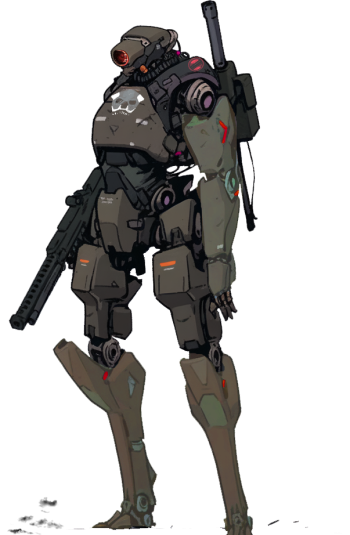 |
|
| Designer: | Shasta No Sekai |
| Nomenclature: | |
| Manufacturer: | Shasta No Sekai |
| Fielded by: | Automated Army Project |
| Damage Rating (Version 3) | T-2 |
| Production Level | Mass Production |
History
The inception of the Base Drone Body can be traced back to Shasta No Sekai's Research and Development endeavors in YE 45. Originally conceptualized as a versatile and adaptable platform for various applications to offset labor within the factories in the corporation and its many hazzards, what began as a simple design to aid in inter-factory transportation and remote maintenance gradually transformed into the cornerstone of the ambitious Automated Army Project.
The initial inspiration for the drone came from a practical problem faced by Shasta No Sekai's R&D team. Seeking a reliable method for inter-factory movement within sprawling research complexes, conceiving a drone that incorporated a minor The Fae uplink to allow and of the thousands of Fairy Ai to inhabit them. This simple idea blossomed into a more complex project as the team realized the potential applications of such a versatile platform with a human-level intelligence in the form of Fairys.
As development progressed, the Base Drone Body underwent a series of innovations. Its capabilities were expanded, its design refined, and its functionality extended far beyond its original purpose. One crucial breakthrough came when the team managed to insert a failed Fairy AI into a drone, allowing for each drone to perform simple tasks and routines with remote control by a Fairy operator. This seamless link between operator and machine revolutionized the drone's potential, enabling real-time responses and sophisticated maneuvers on demand.
While rapidly advancing the design the R&D team was held back significantly by resource scarcity. The drone could be easily manufactured via fabricator on site at locations where needed but many of the critical components and parts the corporation would need to make quality drones enmasse were not found in abundance on Freehold Factory forcing most of the drones to be made of low-quality materials and parts as the MK-I drones while those exclusively designed to be controlled by Fairy AI were reserved for better equipment and as a step above the MK-II drones.
Function and Design
The Base Drone Body is designed to serve as a multipurpose platform, capable of fulfilling a range of roles on or off the battlefield. Standing just under human height on average, it closely resembles a humanoid figure to maximize compatibility with human environments. The drone houses a minor Fae uplink, allowing a Fairy to establish a connection and control it seamlessly. When not under direct Fairy control, it features a rudimentary AI derived from failed Fairy AI who did not achieve sentience or sapience, enabling it to perform basic tasks autonomously.
Inteligence
The Base Drone Body, when operating without a Fairy connected, possesses a basic level of intelligence driven by pre-programmed algorithms and simple decision trees, following a set of predefined directives and responding to specific scenarios with straightforward logic.
In the absence of a Fairy operator, the drone relies on a rudimentary of a failed Fairy AI that governs its actions based on a limited set of parameters with little ability to multitask or problem solve outside the box. These parameters encompass self-preservation protocols, basic navigation routines, and straightforward engagement tactics. Its responses are predictable, geared towards avoiding obstacles, following predefined paths, and executing basic combat maneuvers when confronted with threats.
While lacking the adaptability and ingenuity of a sentient being, the drone's simplistic logic allows it to perform routine tasks with precision and consistency. It can carry out straightforward assignments, such as patrolling designated areas, maintaining a defensive stance, or engaging in basic combat scenarios. However, its lack of complex decision-making capabilities and inability to process nuanced situations may render it vulnerable in scenarios requiring creative problem-solving or adaptability.
In essence, the Base Drones intelligence, when operating independently, echoes the predictable and straightforward behavior seen in certain battle droids, adhering to programmed routines and directives without the nuances of human or Fairy cognition. Its primary strength lies in executing repetitive tasks reliably, albeit without the adaptability and critical thinking associated with more advanced AI systems or sentient beings.
Performance
The Base Drone Body exhibits robust performance capabilities that differentiate it from human limitations. With a top speed of up to eight miles per hour, the drone can traverse terrain swiftly and efficiently. Unlike a human, it operates without the constraints of fatigue, ensuring its sustained speed over extended periods without slowing down. This endurance makes it a reliable asset for tasks requiring consistent movement and coverage.
In terms of strength, the drone can lift objects weighing up to 120 pounds, exclusive of its own weight or additional equipment. This lifting capacity enhances its utility in various scenarios, from carrying supplies to providing mechanical assistance in demanding environments. Additionally, the drone's waist can rotate a full 360 degrees, granting it exceptional mobility to react swiftly to changing situations without the need for cumbersome turns.
The drone body itself weighs in at 100 pounds and has full human mobility in its arms and legs, reflecting a balance between sturdiness and mobility. This weight allows it to withstand physical stress and environmental conditions while remaining agile enough to navigate diverse landscapes. The combination of its weight, lifting capacity, and endurance positions the Base Drone Body as a reliable and versatile mechanical platform capable of executing a wide range of tasks effectively.
Systems
Armored Form: The Base Drone Body is constructed with lightweight yet durable composite materials of mostly titanium, carbon nanofibres, Durandium Alloy, and Thorium, all providing protection against small arms fire and shrapnel. This armor ensures its survival on the battlefield, even in hostile environments as well as against enviormental hazzards. The AAP drone body is air-tight and can operate in space or under water with little mobility issues.
Sensors and Surveillance: Equipped with a suite of sensors, including infrared and electromagnetic detectors, each drone can gather and transmit real-time data about its surroundings. This capability makes it an invaluable tool when multiple drones are connected to a commander unit.
Maglocking Feet: The drone is equipped with maglocking feet that allow it to adhere to various surfaces, enabling it to operate in urban environments, on walls, ceilings, and on starship or station hulls without dislodging.
Energy Cell Matrix: each drone features an integrated energy Cell Matrix, which serves as its power source and is located in the chest of the drone. Multiple energy cells rotate their usage while self-recharging to allow each drone to operate for extended periods of activity with little downtime. When ruptured the energy cell matrix can be explosive.
Adaptable Arm Mounting: The Base Drone Body is equipped with a standardized arm mounting system that accommodates a variety of interchangeable tools and attachments. This modular design enables it to be customized for different roles, such as carrying equipment, manipulating objects, or even wielding light weaponry.
Drone Variants
The Automated Army Project is still in its early stages of development, but the potential benefits and risks of such technology are being carefully considered by Shastas World Corporation. As the project continues to progress, further research and development should provide more varied automatons. By default the basic weapon issued to each AAP drone is a SnS Freehold Pattern Laslock rifle, or Meso Laser in the case of assault drones. While the MK-II juggernauts have Macro Laser.
Mk-I
The Early-model Mk-I drone is a cheap, disposable, unsightly drone roughly on par with some of the cheaper models of autonomous soldiers that can be found in the sector. Inhabited by a Fairy who has yet to gain sentience the MK-I is simple in both function and processing ability being able to follow the order and perform simple tasks but is unable to think outside of pre-programmed parameters as it is unable to use outside thinking without developing a will of its own.
Performance wise the Mk-I is slow both physically and in action. Able to move at most a fast walk or march. Likewise, the Mk-I is slightly slower than the base human reaction making it slow on a draw and giving it poor tracking abilities.
The Mk-I, however, when fielded en mass is a cheap tide of inevitable death and can be utilized to its best when paired with a commander unit. The best use for the Mk-I drone is for the security of facilities or structures, holding territory, or in mass combat where disposable fodder is a must.
Mk-I(a) Assault
The Mk-I(a) is a Mk-I drone that has had two meso lasers attached to the forearms instead of carrying a rifle or other weapon. This adds firepower to the I(a) over that of the base model but otherwise serves no other purpose than to add additional firepower to a group of Mk-Is.
The added firepower is significant, however. And makes the I(a) comparable to a walking suppression platform able to hose significant firepower down range.
Mk-I(m) Marine
The Mk-I(m) is a variant of the base Mk-I rated for void and underwater operations. While all base Mk-I' capable in these environments the I(m) has added upgrades such as gyroscopes, maglocking feet and hands, and more capable servos and optics.
The I(m) is best used inside of starships or stations either when operating inside of them, on the exterior, or when boarding. Their armor is also rated better against solar heat and cold fluctuations than the base Mk-I
Mk-I(t) Tactical
The Mk-I(t) is a variant of the Mk-I base drone which is slotted to accept a fully-sentient and capable Fairy AI. While still weak, slow, and limited in capabilities the I(t) is able to freely think and problem solve and overcomes most of the weaknesses of its platform through it. They are more accurate, responsive, and deadly than the base Mk-I and are the equivalent of a squad leader often found amongst groups of base Mk-I drones.
Mk-II
Unlike the mass-produced Mk-I drones the Mk-II are much fewer in production. Comparable in performance to an actual soldier the time and effort that has gone into the Mk-II are outstanding compared to the usual company practice. While still made of low-quality parts and on a budget, it is likely that if made with the best possible parts the Mk-II could be one of the best-automated soldier platforms in the sector.
But it is not.
Comparable to the average soldier in speed, reaction time, and performance the Mk-II excells due to its beyond-human processing and communications abilities. As such a team or more of Mk-IIs performs like a well-oiled combat machine able to out-perform and out-fight most threats beyond their numbers.
Mk-II(a) Assault
The assault variant of the base Mk-II the II(a) enhances the base models servos to use heavier-recoil weaponry such as shotguns with excellence. This combined with a deployable durrandium blade from one of its forearms tailors the II(a) towards close-quarters combat.
Mk-II(e) Explosives
The Mk-II(e) takes the base Mk-II and adds buffering pads under the armor to not only protect the drone from explosive blasts but also shrapnel and concussion effects. As such the II(e) model drone is made to operate with explosives and explosive weaponry such as grenade launchers or man-portable anti-tank systems in close proximity without damaging themselves or its interior systems and electronics.
Mk-II(s) Scout
The II(s) is a variant of the base Mk-II with enhanced gyros and servos in the legs, hips, and torso. Able to run considerably faster the II(s) is also more agile and muneverable than the base Mk-II making it able to not only cover more ground but also traverse greater terrain hazards with ease.
As such and with added internal sensor optics for scouting it excels also as a skirmisher and marksman.
Mk-II(m) Marine
Like the Mk-I variant before it, the Mk-II(m) is made for void and maritime operations. An excellent boarder the II(m) is able to secure itself to ship and station hulls and traverse them nearly as efficiently as they can on any surface.
Beyond just being able to apply itself to starships and the like the Mk-II(m) also has advanced exoskeleton support for forcing open bulkhead doors, a plasma-torch for cutting through bulkheads, advanced gyroscopes for operating in lower gravity and gravitational manipulated areas, and EM protective measures against solar heat and cold.
Mk-II(j) Juggernought
The II(j) is an up-armored Mk-II with a large power pack of energy cells to power two macro lasers that replace its hands and forearms at the elbow joint.
The II(j) excels at not only suppression but an outright immense fire support platform able to overwhelm entire combat engagements.
Mk-II(r) Recon
Not so much a scout like the II(s) variant, the Mk-II® is an attempt at creating a special forces drone by the corporation.
It attempts to achieve this through a degree of referencing various actions in films, media, and games. As well as adding dampeners to the servos to make a mostly silent drone platform for infiltration, a lining over the power-pack to veil the radiation and energy signatures, advanced optics, and also deployable mirage-nanites for concealment and camouflage.
Commander Type
The Commander Type drone is a modified Mk-II drone with a Fae uplink making it a mobile source of not only communication with the Fae and the corporation but also able to draw on the combined processing power of other fairys making it a very capable commander.
The Commander type is the backbone of a drone force and can move its fairy to other units so long as the connection to the Fae is not broken allowing them to move into other units at will while keeping its main commander body alive elsewhere.
Due to its unrivaled processing ability, the commander-type is also no pushover and is one of the most combat-capable drones in a force able to hold its own against most sub-powered armored threats.
OOC Notes
Charmaylarg created this article on 2023/04/24 13:22.
